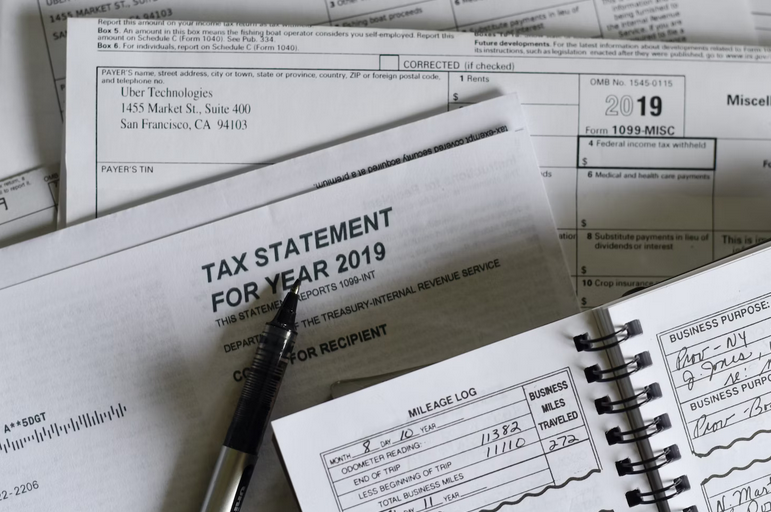Year: 2023

Understanding Tax Debt Resolution: The Role of IRS Tax Relief Programs
- by Emilie Albury
- 2 years ago
- 0 comments
Tax debt can be a daunting burden for individuals and businesses alike, leading to financial stress and uncertainty. However, the Internal Revenue Service offers an IRS forgiveness program designed to help taxpayers resolve their tax debt and regain financial stability. In this article, we will explore these IRS tax relief programs and their vital role in assisting taxpayers in times of financial hardship.
Offer in Compromise (OIC)
The Offer in Compromise program is one of the most well-known IRS tax relief programs. It allows eligible taxpayers to settle their tax debt for less than the full amount owed. To qualify, you must demonstrate that paying the full amount would cause financial hardship or be unjust. The IRS considers factors such as your income, expenses, assets, and ability to pay.
Installment Agreements
Installment agreements provide taxpayers with a structured plan to pay off their tax debt over time. These agreements allow you to make regular monthly payments, making it easier to manage your financial obligations. The IRS offers various types of installment agreements, depending on the amount you owe and your financial situation.
Innocent Spouse Relief
Innocent Spouse Relief is designed to protect individuals who may be held responsible for their spouse’s tax debt. If you can prove that you had no knowledge of your spouse’s tax errors or omissions, you may qualify for relief. This program helps innocent spouses avoid unfair tax liability.
Currently Not Collectible (CNC) Status

If you are facing financial hardship and cannot afford to pay your tax debt, you may be eligible for Currently Not Collectible status. This temporarily suspends IRS collection efforts until your financial situation improves. While in CNC status, the IRS will not attempt to collect the debt but may still accrue penalties and interest.
Tax Liens and Levies Resolution
IRS tax relief programs also address tax liens and levies. A tax lien is a legal claim against your property, while a levy allows the IRS to seize your assets to satisfy a tax debt. The IRS offers options to release or remove tax liens and stop levies, such as entering into an installment agreement or demonstrating financial hardship.
Fresh Start Initiative
The Fresh Start Initiative is a collection of IRS tax relief provisions designed to make it easier for individuals and businesses to resolve their tax debt. It includes more flexible criteria for Offer in Compromise, streamlined installment agreements, and increased thresholds for tax liens.
Tax Relief for Disaster Victims
In times of natural disasters, the IRS provides special tax relief programs for affected individuals and businesses. This relief may include extended filing deadlines, penalty waivers, and assistance in reconstructing lost tax records.
IRS tax relief programs play a crucial role in helping taxpayers resolve their tax debt and regain financial stability. Whether you are struggling with a substantial tax debt or facing unexpected financial challenges, it’s essential to explore the options available to you. Consulting with a tax professional or seeking assistance from the IRS can help you determine the best course of action for your specific situation. Remember that proactive communication with the IRS is often the first step toward finding a suitable tax debt resolution plan.…
Read More
Navigating the Pitfalls: Understanding the Common Risks of Trading
- by Benjamin Garza
- 3 years ago
- 0 comments
Are you considering entering the trading world but still unsure about the risks involved? Trading can indeed be a lucrative venture when done right, but it also comes with its fair share of risks. As a trader, it is crucial to understand how it can affect your investments. But f you are new to trading or planning to start trading, there are some things to know about. By reading the article, you can learn more about it. Here, we will discuss the common risks of trading.
Market Risk
Market risk is the possibility of losing money due to changes in market conditions. It’s a common risk that every investor faces when trading. Economic fluctuations and political events can affect market prices leading to potential losses for investors. Market risks can be classified into two categories: systematic and unsystematic. Systematic risks such as inflation rates, wars, interest rate changes, and natural disasters affect the entire stock or financial markets. Unsystematic risks, such as management decisions or supply chain disruptions, are specific to individual companies.
Liquidity Risk
Liquidity risk is one of the most significant risks traders face when investing in the stock market. This type of risk refers to the possibility that an investor may be unable to sell their assets quickly enough due to a lack of buyers or sellers. In other words, it’s the risk associated with being unable to convert an investment into cash without suffering a loss. This type of risk can occur for several reasons, such as changes in market conditions or company-specific factors affecting liquidity levels. For example, if a publicly traded company has poor financial results and investors start selling off their shares, this could cause liquidity problems and make it difficult for other investors looking to sell their own shares. In addition, trading in illiquid securities like penny stocks can also expose traders to significant liquidity risks because these types of investments are often thinly traded with low volume.

Interest Rate Risk
Interest rate risk is one of the common risks associated with trading. It refers to the potential for losses due to changes in interest rates. It works because when interest rates increase, the value of fixed-income securities declines, which can result in losses for investors. For example, if an investor holds a bond paying 5% interest and the market interest rates rise to 6%, then new bonds issued will pay this higher rate. This makes existing 5% bonds less attractive, causing their price to fall. If this investor decides to sell their bond before maturity, they could lose money because its value has decreased. This risk applies not only to individual bonds but also affects other investments, such as stocks and mutual funds, that are sensitive to changes in interest rates.
Credit Risk
Regarding trading, credit risk is one of the most significant risks that traders face. A borrower or counterparty. In other words, when you lend money or enter into an agreement with someone else, there’s always a chance that they won’t be able to repay you. Credit risk can arise in many different situations. For example, if you’re trading on margin and your broker goes bankrupt or fails to meet its obligations, you could suffer significant losses. Similarly, if you invest with a company that later goes bankrupt or defaults on its debt payments, you could lose your entire investment.
Trading can be a potentially rewarding but also a risky venture. It’s important to be aware of the risks and take measures to minimize them. Market risk, liquidity risk, interest rate risk, and credit risk are all common types of risks that traders face. Traders must stay up-to-date with market news and trends to make informed decisions about when to enter or exit trades. With careful planning and execution strategies, traders can successfully manage the risks associated with trading.…
Read More
Simple Hacks to Take Your Credit Card Rewards to the Next Level
- by Benjamin Garza
- 3 years ago
- 0 comments
Juggling with kids while working at home and managing the finances – all at the same time is a challenge for anyone. But hey, busy moms! Did you know that those credit card(s) that are tucked away in your wallet can help you get rewards and more? Yes, that’s right. With the bästa kreditkortet or credit card reward programs, you can get money back on all of your purchases, as well as special discounts and deals.
The banks and issuers of these cards provide cash rewards, airline miles, points for shopping, gift certificates, and more for using the card. Now let me ask you a question. Are you ready to max out the rewards and get the most bang for your buck? So read on for some simple hacks that can help you do just that.
Consider Going for a “Product Change”
First off, let’s evaluate how much you are getting from your current credit card. Is it enough? If not, why not consider doing a “product change” – changing the type of credit card you currently have? Many banks and issuers run special campaigns offering higher reward points on various types of cards like travel, gas, dining, and so on. Do your research and find out which card will provide you with the best rewards. Without applying for a new card, you can get more rewards by doing a product change.
Ask for a Retention Offer
Have you noticed that some of your cards have been sitting idle in your wallet? It may be time to call the issuer and ask for a retention offer. Many banks will give bonus points, rewards, or discounts if you start using their card again. This will be such a great opportunity to get the most out of your card and enhance your rewards. Just be sure to read the fine print and ask questions if needed.
Be Aware of the Credit Card Calendar
The credit card market is constantly evolving. They have great offers and rewards points that can be availed during different times of the year. For example, banks usually come out with special campaigns around holidays such as Christmas and Thanksgiving. Doing your due diligence to keep up with the ever-changing promotions will help you get more rewards points and discounts on all your purchases.
Pay Attention to the Bank’s Promotions
Banks and credit card issuers often come up with new promotions that can help you maximize your rewards points. They may offer discounts on certain products or services, bonus points for a specific purchase amount, cash back offers, and so on. So make sure to read their emails, flyers, and other materials to know what they are offering, and take advantage of the same. In some cases, you may even be eligible for additional rewards and discounts – so don’t miss out on those opportunities.
Finally, make sure you use your credit card responsibly. Pay off your balance in full each month to avoid carrying debt or paying interest. This way, you’ll be able to maximize your reward points and get more out of them. With these simple hacks, you can take your credit card rewards to the next level and get the most bang for your buck. So moms, get outside your comfy zone and make the most of your card.…
Read More